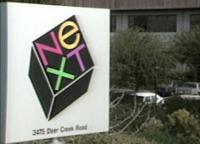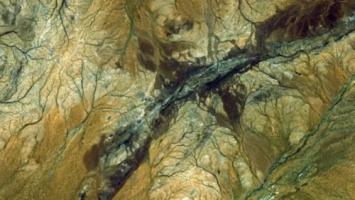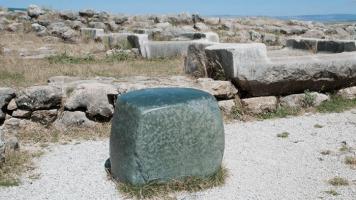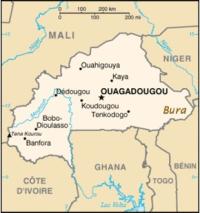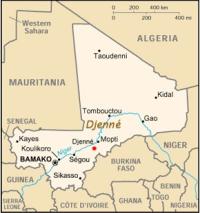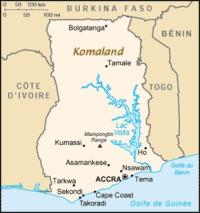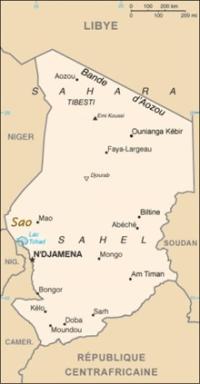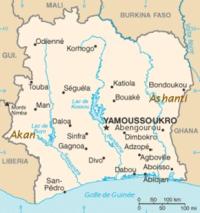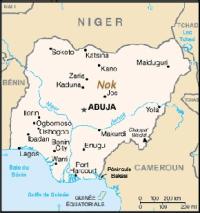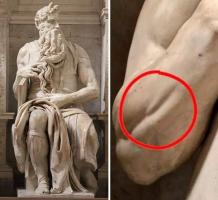Copy Link
Add to Bookmark
Report
129 Phrack Inc. Volume Three, Issue 30, File #5 of 12

==Phrack Inc.==
Volume Three, Issue 30, File #5 of 12
()()()()()()()()()()()()()()()()()()()
() ()
() The DECWRL Mail Gateway ()
() ()
() by Dedicated Link ()
() ()
() September 20, 1989 ()
() ()
()()()()()()()()()()()()()()()()()()()
INTRODUCTION
DECWRL is a mail gateway computer operated by Digital's Western Research
Laboratory in Palo Alto, California. Its purpose is to support the interchange
of electronic mail between Digital and the "outside world."
DECWRL is connected to Digital's Easynet, and also to a number of different
outside electronic mail networks. Digital users can send outside mail by
sending to DECWRL::"outside-address", and digital users can also receive mail
by having your correspondents route it through DECWRL. The details of incoming
mail are more complex, and are discussed below.
It is vitally important that Digital employees be good citizens of the networks
to which we are connected. They depend on the integrity of our user community
to ensure that tighter controls over the use of the gateway are not required.
The most important rule is "no chain letters," but there are other rules
depending on whether the connected network that you are using is commercial or
non-commercial.
The current traffic volume (September 1989) is about 10,000 mail messages per
day and about 3,000 USENET messages per day. Gatewayed mail traffic has
doubled every year since 1983. DECWRL is currently a Vax 8530 computer with 48
megabytes of main memory, 2500 megabytes of disk space, 8 9600-baud (Telebit)
modem ports, and various network connections. They will shortly be upgrading
to a Vax 8650 system. They run Ultrix 3.0 as the base operating system.
ADMINISTRATION
The gateway has engineering staff, but no administrative or clerical staff.
They work hard to keep it running, but they do not have the resources to answer
telephone queries or provide tutorials in its use.
They post periodic status reports to the USENET newsgroup dec.general. Various
helpful people usually copy these reports to the VAXNOTES "gateways" conference
within a day or two.
HOW TO SEND MAIL
DECWRL is connected to quite a number of different mail networks. If you were
logged on directly to it, you could type addresses directly, e.g.
To: strange!foreign!address.
But since you are not logged on directly to the gateway, you must send mail so
that when it arrives at the gateway, it will be sent as if that address had
been typed locally.
* Sending from VMS
If you are a VMS user, you should use NMAIL, because VMS mail does not know how
to requeue and retry mail when the network is congested or disconnected. From
VMS, address your mail like this:
To: nm%DECWRL::"strange!foreign!address"
The quote characters (") are important, to make sure that VMS doesn't try to
interpret strange!foreign!address itself. If you are typing such an address
inside a mail program, it will work as advertised. If you are using DCL and
typing directly to the command line, you should beware that DCL likes to remove
quotes, so you will have to enclose the entire address in quotes, and then put
two quotes in every place that one quote should appear in the address:
$ mail test.msg "nm%DECWRL::""foreign!addr""" /subj="hello"
Note the three quotes in a row after foreign!addr. The first two of them are
doubled to produce a single quote in the address, and the third ends the
address itself (balancing the quote in front of the nm%).
Here are some typical outgoing mail addresses as used from a VMS system:
To: nm%DECWRL::"lll-winkin!netsys!phrack"
To: nm%DECWRL::"postmaster@msp.pnet.sc.edu"
To: nm%DECWRL::"netsys!phrack@uunet.uu.net"
To: nm%DECWRL::"phrackserv@CUNYVM.bitnet"
To: nm%DECWRL::"Chris.Jones@f654.n987.z1.fidonet.org"
* Sending from Ultrix
If your Ultrix system has been configured for it, then you can, from your
Ultrix system, just send directly to the foreign address, and the mail software
will take care of all of the gateway routing for you. Most Ultrix systems in
Corporate Research and in the Palo Alto cluster are configured this way.
To find out whether your Ultrix system has been so configured, just try it and
see what happens. If it doesn't work, you will receive notification almost
instantly.
NOTE: The Ultrix mail system is extremely flexible; it is almost
completely configurable by the customer. While this is valuable to
customers, it makes it very difficult to write global instructions for
the use of Ultrix mailers, because it is possible that the local changes
have produced something quite unlike the vendor-delivered mailer. One of
the popular changes is to tinker with the meaning of quote characters (")
in Ultrix addresses. Some systems consider that these two addresses are
the same:
site1!site2!user@host.dec.com
and
"site1!site2!user"@host.dec.com
while others are configured so that one form will work and the other
will not. All of these examples use the quotes. If you have trouble
getting the examples to work, please try them again without the quotes.
Perhaps your Ultrix system is interpreting the quotes differently.
If your Ultrix system has an IP link to Palo Alto (type "/etc/ping
decwrl.dec.com" to find out if it does), then you can route your mail to the
gateway via IP. This has the advantage that your Ultrix mail headers will
reach the gateway directly, instead of being translated into DECNET mail
headers and then back into Ultrix at the other end. Do this as follows:
To: "alien!address"@decwrl.dec.com
The quotes are necessary only if the alien address contains a ! character, but
they don't hurt if you use them unnecessarily. If the alien address contains
an "@" character, you will need to change it into a "%" character. For
example, to send via IP to joe@widget.org, you should address the mail
To: "joe%widget.org"@decwrl.dec.com
If your Ultrix system has only a DECNET link to Palo Alto, then you should
address mail in much the same way that VMS users do, save that you should not
put the nm% in front of the address:
To: DECWRL::"strange!foreign!address"
Here are some typical outgoing mail addresses as used from an Ultrix system
that has IP access. Ultrix systems without IP access should use the same
syntax as VMS users, except that the nm% at the front of the address should not
be used.
To: "lll-winken!netsys!phrack"@decwrl.dec.com
To: "postmaster%msp.pnet.sc.edu"@decwrl.dec.com
To: "phrackserv%CUNYVM.bitnet"@decwrl.dec.com
To: "netsys!phrack%uunet.uu.net"@decwrl.dec.com
To: "Chris.Jones@f654.n987.z1.fidonet.org"@decwrl.dec.com
DETAILS OF USING OTHER NETWORKS
All of the world's computer networks are connected together, more or less, so
it is hard to draw exact boundaries between them. Precisely where the Internet
ends and UUCP begins is a matter of interpretation.
For purposes of sending mail, though, it is convenient to divide the network
universe into these categories:
Easynet Digital's internal DECNET network. Characterized by addresses
of the form NODE::USER. Easynet can be used for commercial
purposes.
Internet A collection of networks including the old ARPAnet, the NSFnet,
the CSnet, and others. Most international research,
development, and educational organizations are connected in
some fashion to the Internet. Characterized by addresses of
the form user@site.subdomain.domain. The Internet itself
cannot be used for commercial purposes.
UUCP A very primitive network with no management, built with
auto-dialers phoning one computer from another. Characterized
by addresses of the form place1!place2!user. The UUCP network
can be used for commercial purposes provided that none of the
sites through which the message is routed objects to that.
USENET Not a network at all, but a layer of software built on top of
UUCP and Internet.
BITNET An IBM-based network linking primarily educational sites.
Digital users can send to BITNET as if it were part of
Internet, but BITNET users need special instructions for
reversing the process. BITNET cannot be used for commercial
purposes.
Fidonet A network of personal computers. I am unsure of the status of
using Fidonet for commercial purposes, nor am I sure of its
efficacy.
DOMAINS AND DOMAIN ADDRESSING
There is a particular network called "the Internet;" it is somewhat related to
what used to be "the ARPAnet." The Internet style of addressing is flexible
enough that people use it for addressing other networks as well, with the
result that it is quite difficult to look at an address and tell just what
network it is likely to traverse. But the phrase "Internet address" does not
mean "mail address of some computer on the Internet" but rather "mail address
in the style used by the Internet." Terminology is even further confused
because the word "address" means one thing to people who build networks and
something entirely different to people who use them. In this file an "address"
is something like "mike@decwrl.dec.com" and not "192.1.24.177" (which is what
network engineers would call an "internet address").
The Internet naming scheme uses hierarchical domains, which despite their title
are just a bookkeeping trick. It doesn't really matter whether you say
NODE::USER or USER@NODE, but what happens when you connect two companies'
networks together and they both have a node ANCHOR?? You must, somehow,
specify which ANCHOR you mean. You could say ANCHOR.DEC::USER or
DEC.ANCHOR::USER or USER@ANCHOR.DEC or USER@DEC.ANCHOR. The Internet
convention is to say USER@ANCHOR.DEC, with the owner (DEC) after the name
(ANCHOR).
But there could be several different organizations named DEC. You could have
Digital Equipment Corporation or Down East College or Disabled Education
Committee. The technique that the Internet scheme uses to resolve conflicts
like this is to have hierarchical domains. A normal domain isn't DEC or
STANFORD, but DEC.COM (commercial) and STANFORD.EDU (educational). These
domains can be further divided into ZK3.DEC.COM or CS.STANFORD.EDU. This
doesn't resolve conflicts completely, though: both Central Michigan University
and Carnegie-Mellon University could claim to be CMU.EDU. The rule is that the
owner of the EDU domain gets to decide, just as the owner of the CMU.EDU gets
to decide whether the Electrical Engineering department or the Elementary
Education department gets subdomain EE.CMU.EDU.
The domain scheme, while not perfect, is completely extensible. If you have
two addresses that can potentially conflict, you can suffix some domain to the
end of them, thereby making, say, decwrl.UUCP be somehow different from
DECWRL.ENET.
DECWRL's entire mail system is organized according to Internet domains, and in
fact we handle all mail internally as if it were Internet mail. Incoming mail
is converted into Internet mail, and then routed to the appropriate domain; if
that domain requires some conversion, then the mail is converted to the
requirements of the outbound domain as it passes through the gateway. For
example, they put Easynet mail into the domain ENE STATE DENSITY ACCESS NUMBER NTWK
----- ------------------- -------------- ------ ------------ ----
03306 BERKELEY CALIFORNIA 300/1200 415-548-2121 @PPS
06272 EL SEGUNDO CALIFORNIA 300/1200 213-640-8548 @PPS
06272 FULLERTON CALIFORNIA 300/1200 714-441-2777 @PPS
06272 INGLEWOOD CALIFORNIA 300/1200 213-216-7667 @PPS
06272 LOS ANGELES(DOWNTOWN) CALIFORNIA 300/1200 213-687-3727 @PPS
06272 LOS ANGELES CALIFORNIA 300/1200 213-480-1677 @PPS
03306 MOUNTAIN VIEW CALIFORNIA 300/1200 415-960-3363 @PPS
03306 OAKLAND CALIFORNIA 300/1200 415-893-9889 @PPS
03306 PALO ALTO CALIFORNIA 300/1200 415-325-4666 @PPS
06272 PASADENA CALIFORNIA 300/1200 818-356-0780 @PPS
03306 SAN FRANCISCO CALIFORNIA 300/1200 415-543-8275 @PPS
03306 SAN FRANCISCO CALIFORNIA 300/1200 415-626-5380 @PPS
03306 SAN FRANCISCO CALIFORNIA 300/1200 415-362-2280 @PPS
03306 SAN JOSE CALIFORNIA 300/1200 408-920-0888 @PPS
06272 SANTA ANNA CALIFORNIA 300/1200 714-972-9844 @PPS
06272 VAN NUYS CALIFORNIA 300/1200 818-780-1066 @PPS
@PPS PACIFIC BELL - NETWORK NAME IS PUBLIC PACKET SWITCHING (PPS)
(CONNECT MESSAGE)
. _. _. _< _C _R _ (SYNCHRONIZES DATA SPEEDS)>
(DOES NOT ECHO TO THE TERMINAL)
ONLINE 1200
WELCOME TO PPS: 415-XXX-XXXX
1 _3 _1 _0 _6 _9 _ (TYMNET ADDRESS)
(DOES NOT ECHO UNTIL TYMNET RESPONDS)
-GWY 0XXXX- TYMNET: PLEASE LOG IN: (HOST # WITHIN DASHES)
SOUTHWESTERN BELL
NODE CITY STATE DENSITY ACCESS NUMBERS NWRK
----- -------------------- -------------- ------- ------------ -----
05443 KANSAS CITY KANSAS 300/1200 316/225-9951 @MRLK
05443 HAYS KANSAS 300/1200 913/625-8100 @MRLK
05443 HUTCHINSON KANSAS 300/1200 316/669-1052 @MRLK
05443 LAWRENCE KANSAS 300/1200 913/841-5580 @MRLK
05443 MANHATTAN KANSAS 300/1200 913/539-9291 @MRLK
05443 PARSONS KANSAS 300/1200 316/421-0620 @MRLK
05443 SALINA KANSAS 300/1200 913/825-4547 @MRLK
05443 TOPEKA KANSAS 300/1200 913/235-1909 @MRLK
05443 WICHITA KANSAS 300/1200 316/269-1996 @MRLK
04766 BRIDGETON/ST. LOUIS MISSOURI 300/1200 314/622-0900 @MRLK
04766 ST. LOUIS MISSOURI 300/1200 314/622-0900 @MRLK
06510 ADA OKLAHOMA 300/1200 405/436-0252 @MRLK
06510 ALTUS OKLAHOMA 300/1200 405/477-0321 @MRLK
06510 ALVA OKLAHOMA 300/1200 405/327-1441 @MRLK
06510 ARDMORE OKLAHOMA 300/1200 405/223-8086 @MRLK
03167 BARTLESVILLE OKLAHOMA 300/1200 918/336-6901 @MRLK
06510 CLINTON OKLAHOMA 300/1200 405/323-8102 @MRLK
06510 DURANT OKLAHOMA 300/1200 405/924-2680 @MRLK
06510 ENID OKLAHOMA 300/1200 405/242-8221 @MRLK
06510 LAWTON OKLAHOMA 300/1200 405/248-8772 @MRLK
03167 MCALESTER OKLAHOMA 300/1200 918/426-0900 @MRLK
03167 MIAMI OKLAHOMA 300/1200 918/540-1551 @MRLK
03167 MUSKOGEE OKLAHOMA 300/1200 918/683-1114 @MRLK
06510 OKLAHOMA CITY OKLAHOMA 300/1200 405/236-0660 @MRLK
06510 PONCA CITY OKLAHOMA 300/1200 405/762-9926 @MRLK
03167 SALLISAW OKLAHOMA 300/1200 918/775-7713 @MRLK
06510 SHAWNEE OKLAHOMA 300/1200 405/273-0053 @MRLK
06510 STILLWATER OKLAHOMA 300/1200 405/377-5500 @MRLK
03167 TULSA OKLAHOMA 300/1200 918/583-6606 @MRLK
06510 WOODWARD OKLAHOMA 300/1200 405/256-9947 @MRLK
@MRLK - SOUTHWESTERN BELL TELEPHONE- NETWORK NAME IS MICROLINK II(R)
(CONNECT MESSAGE)
(PLEASE TYPE YOUR TERMINAL IDENTIFIER)
A _ (YOUR TERMINAL IDENTIFIER)
WELCOME TO MICROLINK II
-XXXX:01-030-
PLEASE LOG IN:
.T < _C _R _> _ (USERNAME TO ACCESS TYMNET)
HOST: CALL CONNECTED
-GWY 0XXXX- TYMNET: PLEASE LOG IN:
SOUTHERN NEW ENGLAND
NODE CITY STATE DENSITY ACCESS NUMBERS NWRK
----- ------------------- ----------- ------- -------------- -----
02727 BRIDGEPORT CONNECTICUT 300/2400 203/366-6972 @CONNNET
02727 BRISTOL CONNECTICUT 300/2400 203/589-5100 @CONNNET
02727 CANAAN CONNECTICUT 300/2400 203/824-5103 @CONNNET
02727 CLINTON CONNECTICUT 300/2400 203/669-4243 @CONNNET
02727 DANBURY CONNECTICUT 300/2400 203/743-2906 @CONNNET
02727 DANIELSON CONNECTICUT 300/2400 203/779-1880 @CONNNET
02727 HARTFORD/MIDDLETOWN CONNECTICUT 300/2400 203/724-6219 @CONNNET
02727 MERIDEN CONNECTICUT 300/2400 203/237-3460 @CONNNET
02727 NEW HAVEN CONNECTICUT 300/2400 203/776-1142 @CONNNET
02727 NEW LONDON CONNECTICUT 300/2400 203/443-0884 @CONNNET
02727 NEW MILFORD CONNECTICUT 300/2400 203/355-0764 @CONNNET
02727 NORWALK CONNECTICUT 300/2400 203/866-5305 @CONNNET
02727 OLD GREDDWICH CONNNETICUT 300/2400 203/637-8872 @CONNNET
02727 OLD SAYBROOK CONNECTICUT 300/2400 203/388-0778 @CONNNET
02727 SEYMOUR CONNECTICUT 300/2400 203/881-1455 @CONNNET
02727 STAMFORD CONNECTICUT 300/2400 203/324-9701 @CONNNET
02727 STORRS CONNECTICUT 300/2400 203/429-4243 @CONNNET
02727 TORRINGTON CONNECTICUT 300/2400 203/482-9849 @CONNNET
02727 WATERBURY CONNECTICUT 300/2400 203/597-0064 @CONNNET
02727 WILLIMANTIC CONNECTICUT 300/2400 203/456-4552 @CONNNET
02727 WINDSOR CONNECTICUT 300/2400 203/688-9330 @CONNNET
02727 WINDSOR LCKS/ENFIELD CONNECTICUT 300/2400 203/623-9804 @CONNNET
@CONNNET - SOUTHERN NEW ENGLAND TELEPHONE - NETWORK NAME IN CONNNET
(CONNECT MESSAGE)
H_ H_ <_ C_ R_> (SYNCHRONIZES DATA SPEEDS)
(DOES NOT ECHO TO THE TERMINAL)
CONNNET
._ T_ <_ C_ R_>_ (MUST BE CAPITAL LETTERS)
26-SEP-88 18:33 (DATA)
031069 (ADDRESS CONFIRMATION)
COM (CONFIRMATION OF CALL SET-UP)
-GWY OXXXX-TYMNET: PLEASE LOG IN:
On a side note, the recent book The Cuckoo's Egg provides some interesting
information (in the form of a story, however) on a Tymnet hacker. Remember
that he was into BIG things, and hence he was cracked down upon. If you keep a
low profile, networks should provide a good access method.
If you can find a system that is connected to the Internet that you can get on
from Tymnet, you are doing well.
_______________________________________________________________________________
Username@f<node #>.n<net #>.z<zone #>.ifna.org
In other words, if I wanted to mail to Silicon Swindler at 1:135/5, the address
would be Silicon_Swindler@f5.n135.z1.ifna.org and, provided that your mailer
knows the .ifna.org domain, it should get through alright. Apparently, as of
the writing of this article, they have implemented a new gateway name called
fidonet.org which should work in place of ifna.org in all routings. If your
mailer does not know either of these domains, use the above routing but replace
the first "@" with a "%" and then afterwards, use either of the following
mailers after the "@": CS.ORST.EDU or K9.CS.ORST.EDU (i.e. username%f<node
#>.n<net #>.z<zone #>.fidonet.org@CS.ORST.EDU [or replace CS.ORST.EDU with
K9.CS.ORST.EDU]).
The following is a list compiled by Bill Fenner (WCF@PSUECL.BITNET) that was
posted on INFONETS DIGEST which lists a number of FIDONET gateways:
Net Node Node Name
~~~ ~~~~ ~~~~~~~~~
104 56 milehi.ifna.org
105 55 casper.ifna.org
107 320 rubbs.ifna.org
109 661 blkcat.ifna.org
125 406 fidogate.ifna.org
128 19 hipshk.ifna.org
129 65 insight.ifna.org
143 N/A fidogate.ifna.org
152 200 castle.ifna.org
161 N/A fidogate.ifna.org
369 17 megasys.ifna.org
NOTE: The UUCP equivalent node name is the first part of the node name. In
other words, the UUCP node milehi is listed as milehi.ifna.org but can
be mailed directly over the UUCP network.
Another way to mail to FIDONET, specifically for Internet people, is in this
format:
ihnp4!necntc!ncoast!ohiont!<net #>!<node #>!user_name@husc6.harvard.edu
And for those UUCP mailing people out there, just use the path described and
ignore the @husc5.harvard.edu portion. There is a FIDONET NODELIST available on
most any FIDONET bulletin board, but it is quite large.
ONTYME
~~~~~~
Previously known as Tymnet, OnTyme is the McDonnell Douglas revision. After
they bought out Tymnet, they renamed the company and opened an experimental
Internet gateway at ONTYME.TYMNET.COM but this is supposedly only good for
certain corporate addresses within McDonnell Douglas and Tymnet, not their
customers. The userid format is xx.yyy or xx.y/yy where xx is a net name and
yyy (or y/yy) is a true username. If you cannot directly nail this, try:
xx.yyy%ONTYME.TYM








